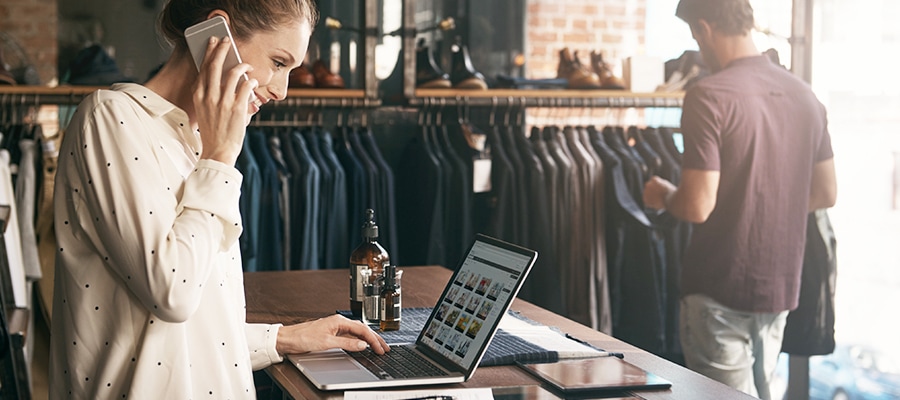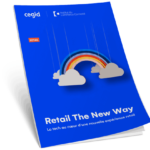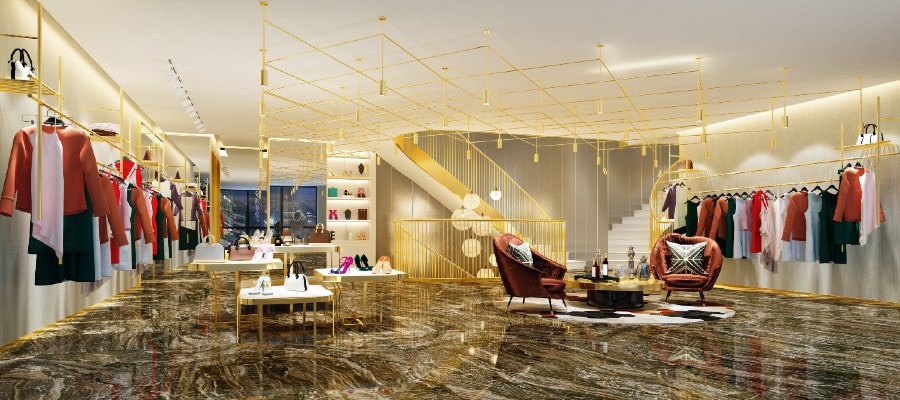Retail & Distribution
What Luxury Selling Ceremonies Will Look Like in the Retail ‘New Normal’
16 juli 2020

According to the spring 2020 Bain-Altagamma Luxury Goods Worldwide Market Study, while some changes to the luxury industry are short-term, others are here to stay. These include an accelerated shift to online within a “phygital” mindset (combining digital and brick-and-mortar), heightened environmental and social consciousness, strengthened local pride, acceleration of the post-aspirational mindset, and demands for intimacy, entertainment and emotions.
So as luxury brands revisit their selling ceremonies, they should make changes with these long-term trends in mind.
1. Storytelling at a Distance
Luxury brands have been simulating the excitement of the live fashion show during the pandemic through digital storytelling. Galeries Lafayette enabled shoppers to browse and shop for luxury and designer items through live video, with expert assistance from personal shoppers or brand representatives. Louis Vuitton launched a Valentine’s Day exclusive pop-up store via WeChat, enabling associates to offer consultations, customer service and exclusive offline promotions via QR code and doubling its online sales compared to the prior year’s Valentine’s season.
Rebecca Minkoff determined that a customer who viewed a product in AR became 65% more likely to make a purchase.
Digital tools empower luxury brands to showcase their heritage, tap into growing appetites for experiences and tell brand stories, such as responsible sourcing from artisans. With even in-person events increasingly infused with technology, luxury brands will be able to rely on their growing tech capabilities even when digital is not the only option.
2. Elevated Omnichannel Delivery
Omnichannel capabilities were already becoming essential in luxury retail, but the pandemic has accelerated their adoption. Services such as Click & Collect, curbside pickup, Ship-from-Store and other variants picked up across retail. But for luxury, these services must be elevated.
Luxury brands are achieving this by offering elegant packaging and personalised delivery to homes, either by store associates or via chauffer. Local fulfillment supports brands’ sustainability messages along with enabling speed, efficiency and the opportunity to move inventory that’s been sitting in stores.
In the UK, Rag & Bone offered RbDelivered — curated stylist selections based on individual preferences delivered to homes — as well as virtual appointments that include the ability to pay by phone and meet the associate outside the store for pickup. Several stores on the UK’s Sloane Street are offering curbside collection and contactless payment, including Prada.
Buy online, pick up in-store (BOPIS) is surging across retail; more than half of retailers in a recent survey believe that 40% or more of their revenue will come from BOPIS orders in three years’ time.
3. Safe and Exclusive In-Store Experiences
Many luxury brands remain dedicated to the idea that the best experiences are still delivered in person, and are encouraging customers into stores with a combination of exclusive products and experiences. They’re also emphasizing safety measures, including staff health checks, contactless payment, hand sanitizer and social distancing.
In Milan, Sergio Rossi launched a COVID-19-conscious pop-up that offers shopping only by appointment, embedded infrared sensors that take customers’ temperatures and project the readings onto the floor, and a 16.5-foot chute to deliver customer purchases from the warehouse above.
Appointments not only prevent crowding; they enable associates to pull items in advance according to customer preferences. Items tried on during the appointment are often quarantined afterward. The Miista footwear boutique on Sloane Square requires protective socks, and to avoid cross-contamination, delivers the shoes 48 hours later from the warehouse. Customers are politely asked to don gloves at Anya Hindmarch.
Finding the Right Resources
The ability to pivot shopping ceremonies is not without its challenges, but technology is helping. Omnichannel platforms are more important than ever to accommodate growing sales channels such as Click & Collect. Robust CRM systems are key to enabling luxury brands to track customer activities and preferences, so they can deliver seamless selling ceremonies across channels to ensure a VIP experience. Technologies such as video walls, Internet of Things and digital signage help create transformative in-store experiences.
Brands are also relying heavily on enhanced inventory management. Enterprise-wide inventory visibility is key to ensuring speedy and sustainable service and managing excess goods sitting in stores. And endless aisle allows associates to access extended styles to satisfy customer needs in an era of smaller stores.
These changes also require store associates to be more multi-faceted than ever. They must adapt their selling and service skills to in-home and digital channels; serve as safety experts; work as brand ambassadors able to handle social media takeovers; stay tech-savvy in the use of mobile and other in-store devices; and be efficient in-store order pickers and packers. They also need the emotional intelligence to read and communicate with clientele about safety and service according to their personal comfort levels, all while speaking the brand’s language.
With much uncertainty remaining, what is crystal clear is that succeeding as a luxury brand will demand flexibility across every facet of the business, including the selling ceremony.
Read the latest ebook on retail trends: Retail The New Way



